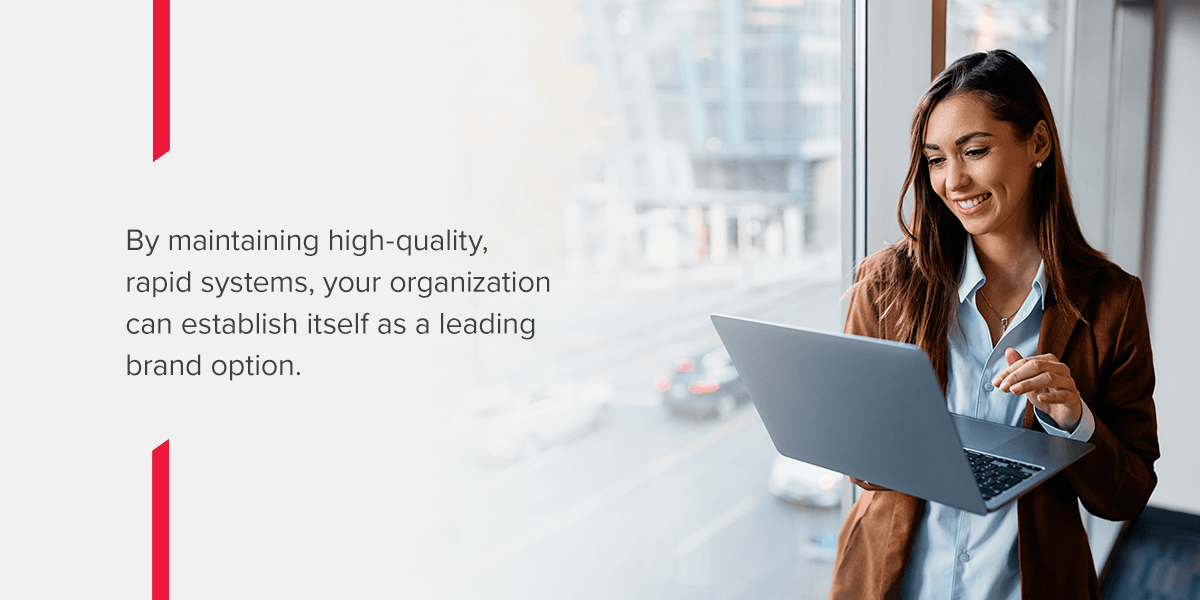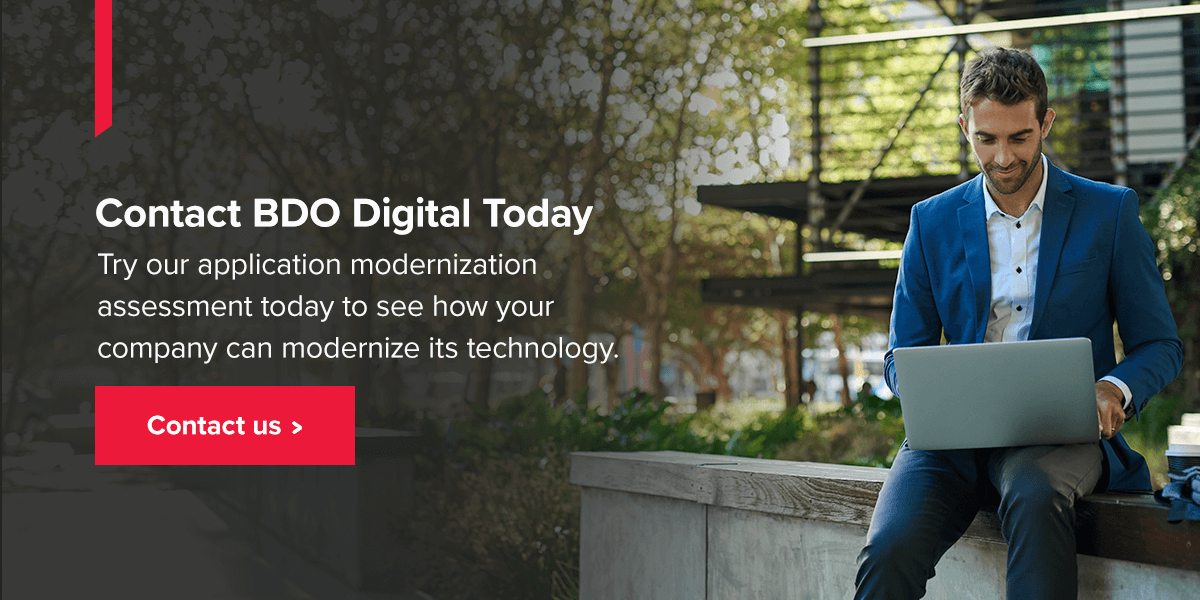What Is App Modernization?
What Is App Modernization?
Companies worldwide must find new ways to meet modern demands. A secure and rapid digital environment can help you remain competitive and match customer needs.
As digital solutions continue to advance, it is important to adapt your systems to meet new requirements. One crucial strategy for organizations is app modernization.
This technique consists of upgrading older software so it can function better in modern environments. Outdated software and legacy systems can prevent your organization from top performance. By modernizing your applications, you can boost efficiency, reduce upgrade costs and maintain a competitive edge in the market.
What Is Application Modernization?
App modernization is the process of updating older software and legacy systems. You can modernize features, infrastructure, languages or other essential frameworks. By upgrading legacy systems, your organization can maintain the full value of your software. The improvements can increase efficiency and security for various business processes.
Many application modernization efforts focus on monolithic applications. These apps are entirely self-contained and combine all features into one interface. Their independent nature makes it more challenging to scale them alongside other organization applications.
When you modernize applications, you can upgrade monolithic systems for easier management. You can separate different features and enable them for individual scaling. These smaller pieces are known as microservices.
For example, a company might use a mobile app for customers to access account information or make payments. The app contains various components, such as authentication, payment interfaces and a front-end design.
If the application uses a monolithic structure, a single system includes all of the features. This structure makes it more difficult to update a single component. If you needed to update the payment feature, it would require an entire recode. Instead, you could modernize the application to make these components individually manageable and easier to use.
Legacy Modernization Benefits
IT application modernization can bring many benefits to your company, including:
- Enhanced performance: During app modernization, you strategically adapt older applications to meet new demands. You can reduce inefficiencies and improve overall business performance by upgrading legacy systems. Regular upgrades also become easier, helping you remove bugs or other flaws.
- Reduced costs: Application modernization also makes it easier to manage expenses. Restructuring monolithic applications makes them easier to upgrade. In turn, you reduce the overall time and resources necessary for updates. In addition, modernization can raise revenue — the more efficiently your applications work, the more profitable your organization can become.
- Improved efficiency: The process can also assist with overall business efficiency. Older systems might feature inefficiencies and incompatibilities with other essential applications. These differences can make daily tasks more time-consuming or frustrating. Your employees can navigate modern features more intuitively, which can enhance productivity. Upgraded features can streamline manual tasks and optimize workflows in many departments.
- Maintained competitivity: Modernized applications allow your organization to remain competitive. You can adopt modern trends that appeal to consumers, such as artificial intelligence. By maintaining high-quality, rapid systems, your organization can establish itself as a leading brand option. It also prepares you to meet new marketplace challenges and trends.
- Better user experience: Modernization makes it easier for consumers to use applications. Legacy systems might feature slow or outdated components that frustrate users. Streamlined functionalities can improve user experience and help users create a more positive attitude toward your brand and services.

Application Modernization Patterns
Organizations can use different patterns to modernize outdated software and applications. These different strategies affect the time and resources needed for modernization. Learning about options can help your company choose the best pattern for your needs.
These are common application modernization patterns:
- Lift and shift: During this pattern, you retrieve an existing application from a legacy system and transfer it to newer infrastructure. For example, you might move an application from an on-premises server into a newer cloud database. The lift and shift technique keeps the original coding and architecture of the application. By maintaining this structure, the process is simpler and less intensive. However, you might be unable to move certain types of applications with this method, including single components.
- Refactoring: Refactoring is also known as rewriting. This strategy involves rewriting the existing code of legacy applications and systems. You might also restructure the codebase. Essentially, you rework content so that it can function in a modernized environment, such as a cloud system. Refactoring is a commonly used technique for breaking down monolithic systems into microservices.
- Re-platforming: Re-platforming falls between the lift and shift and refactoring strategies. It does not require rewriting code, like in refactoring. Instead, you integrate updates that allow the application to fit in with modern environments. For example, you might upgrade the application's back end so it could exist in a cloud-based structure.
Key Technologies for Application Modernization
Many associate app modernization meaning with the different technologies used during the process. Organizations can use a variety of technologies to complete application modernization. Here are some essential technology types for the process:
- Cloud services: Cloud services are third-party hosted platforms. You can store data, applications and other features in cloud environments, then access them on any device. Your modernization efforts might involve transferring legacy systems into a cloud environment.
- Microservices: As mentioned, you can break down monolithic systems into smaller features called microservices. You can deploy and operate each microservice independently. They make it easier to update and alter applications, allowing you to maintain the most modern options.
- Containers: Containers are cloud-based resources. You can store, deploy and operate applications within containers. They simplify application usage for resources stored in the cloud. They make scalability simpler and can boost efficiency within multi-cloud or hybrid-cloud systems.
- Automation: Automation is the process of creating software that manages manual procedures and reduces the need for manual work. It can accelerate business processes by streamlining workflows. During application modernization, you might upgrade features to use automation.
Contact BDO Digital Today
Application modernization helps your organization improve productivity, lower costs and gain a competitive edge. At BDO Digital, we understand the value of modernization efforts for companies. We help our clients implement digital strategies that drive growth and empower operations. BDO Digital serves a wide range of industries and clients.
Our application modernization solution approaches each client with a personalized strategy. We help you identify areas for improvement, then guide you through a modernization technique that can transform digital functions. Try our application modernization assessment today to see how your company can modernize its technology.
To get started with BDO Digital, contact us now!


SHARE